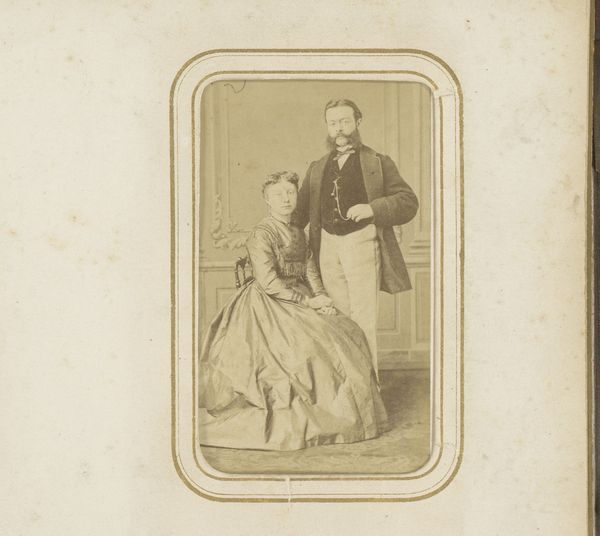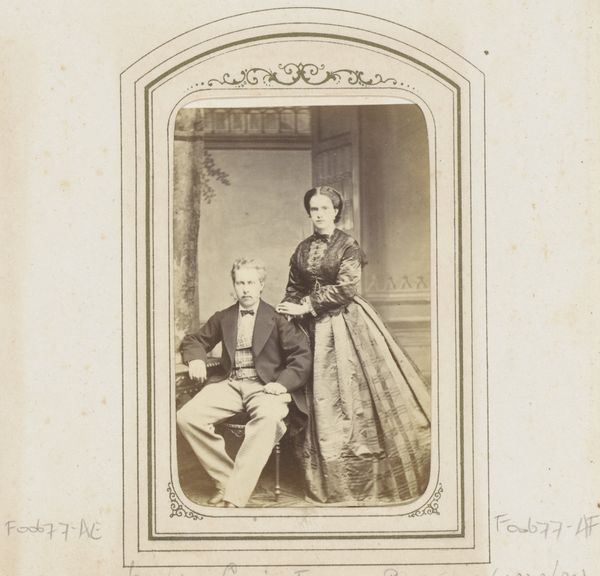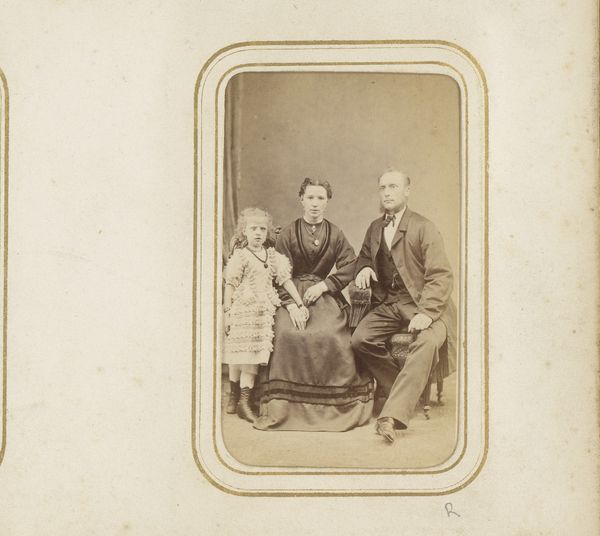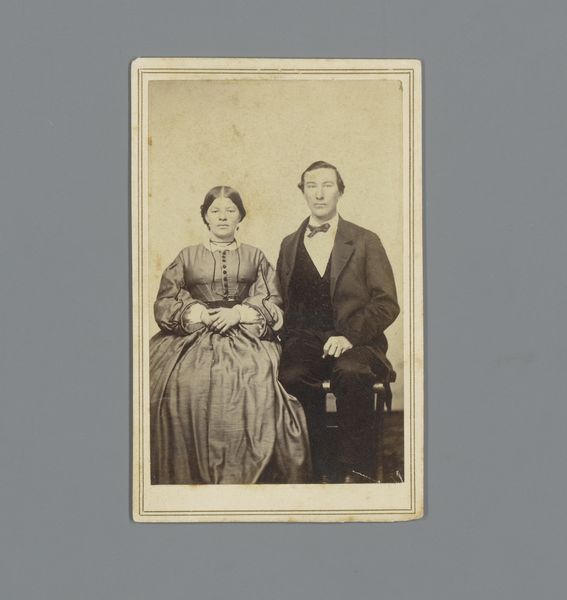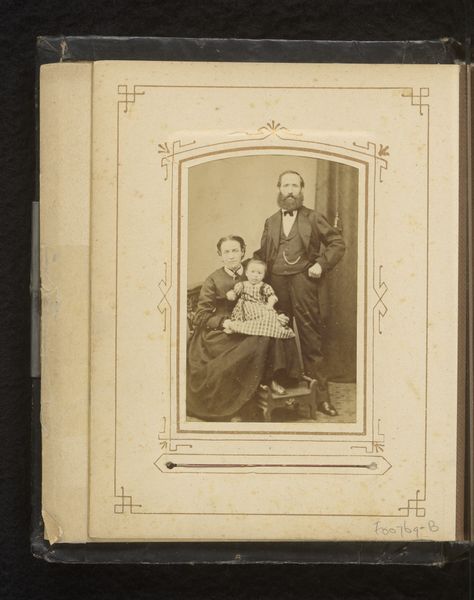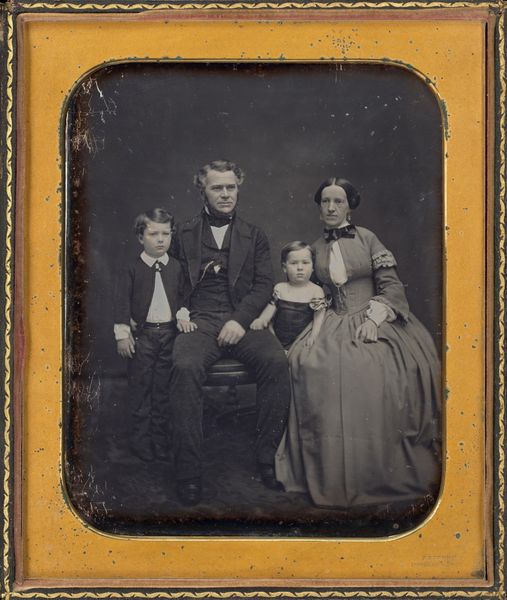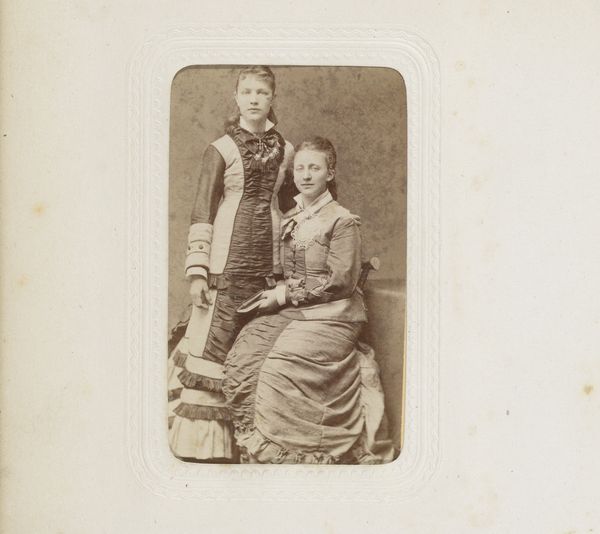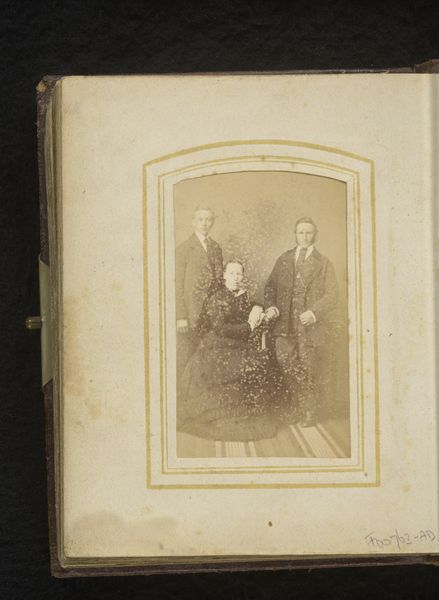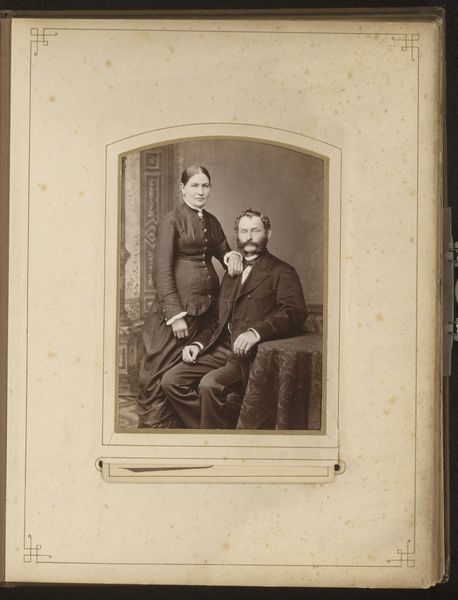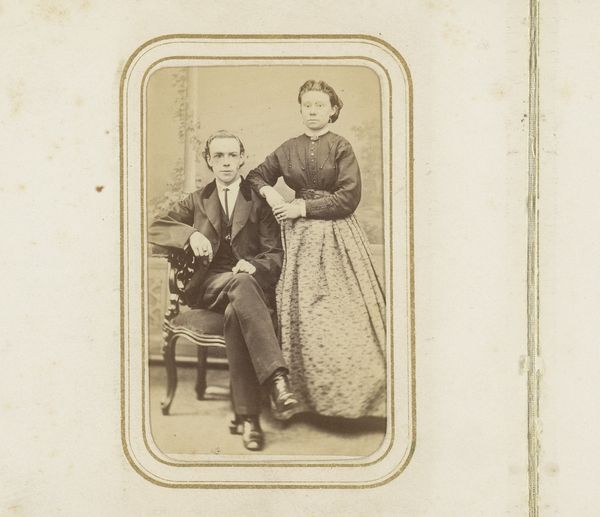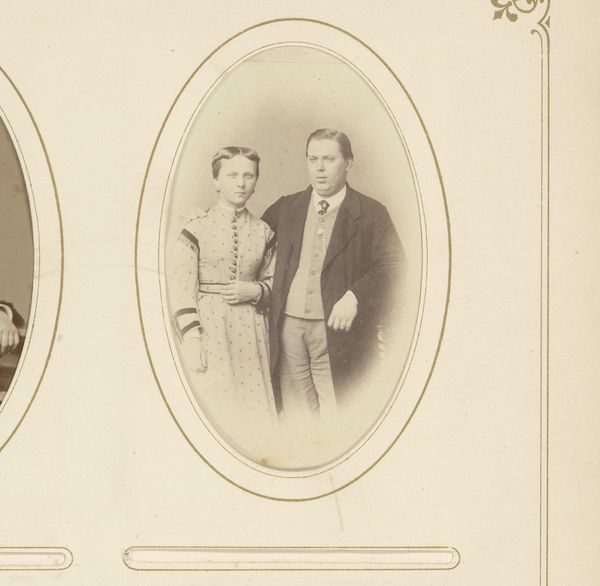
Portret van keizer Napoleon, keizerin Eugenie en hun zoon, als souvenir van de Wereldtentoonstelling van 1867 1867
0:00
0:00
photography, gelatin-silver-print
#
portrait
#
photography
#
coloured pencil
#
group-portraits
#
gelatin-silver-print
Dimensions: height 104 mm, width 64 mm
Copyright: Rijks Museum: Open Domain
Editor: This is a fascinating photographic print from 1867 by Alfred Moitrier, titled "Portret van keizer Napoleon, keizerin Eugenie en hun zoon, als souvenir van de Wereldtentoonstelling van 1867," which translates to "Portrait of Emperor Napoleon, Empress Eugenie, and their son, as a souvenir of the 1867 World's Fair". It's really striking to see them posed so formally, almost like an official painting, even though it's a photograph. What's your take on it? Curator: The photograph really captures the self-conscious performance of Imperial power in the late 19th century. These “souvenir” photographs weren't just personal keepsakes; they were carefully orchestrated exercises in image control and distribution. Editor: So, it’s like propaganda through a new medium? Curator: Exactly. Think about the context. The World's Fair itself was a grand spectacle designed to showcase France's industrial might and cultural superiority. By distributing these portraits, Napoleon III was essentially using photography to disseminate an idealized image of his dynasty. How do you think this contrasts with how leaders project themselves today? Editor: I guess today it would be social media, like carefully filtered Instagram posts. But the idea is the same – curating an image. It's interesting that they chose this softer aesthetic, it looks like a painting at first glance. Curator: Indeed. That softness was likely intentional. While photography offered a semblance of reality, its inherent capacity for manipulation – through posing, lighting, retouching – allowed for the construction of a carefully calibrated visual message. Consider the setting and costumes – do they reinforce or challenge your understanding of 19th century power? Editor: It's really making me rethink photography's supposed objectivity! Curator: Precisely! By examining these images through the lens of history, we start to understand how art, in all its forms, plays an active role in shaping our perceptions of the world.
Comments
No comments
Be the first to comment and join the conversation on the ultimate creative platform.
